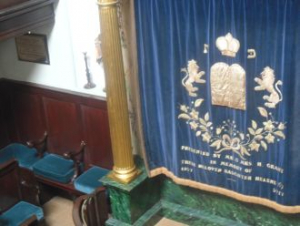
-
 History of Religions
History of the 3 Monotheistic religions (Judaism, Christianity and Islam) and of the main different Christianity confessions (Roman Catholicism, Eastern Catholicism and Eastern Orthodoxy, Anglicanism and Protestantism)
History of Religions
History of the 3 Monotheistic religions (Judaism, Christianity and Islam) and of the main different Christianity confessions (Roman Catholicism, Eastern Catholicism and Eastern Orthodoxy, Anglicanism and Protestantism)
-
 Pedagogical Approaches
New pedagogical approaches to teach history of religion
Pedagogical Approaches
New pedagogical approaches to teach history of religion
-
 Role of Religions in Civilization
How to didactically promote among students of different confessions, the capacity of a critical analysis and understanding of the role played by religions in the history of mankind
Role of Religions in Civilization
How to didactically promote among students of different confessions, the capacity of a critical analysis and understanding of the role played by religions in the history of mankind
-
 Interreligious Students’ Competences
Set of teaching contents, to be used by teachers to highlight and valorize the universal values of tolerance and universalisms that all Monotheistic religions and religious texts contain to promote and sustain mutual understanding among students
Interreligious Students’ Competences
Set of teaching contents, to be used by teachers to highlight and valorize the universal values of tolerance and universalisms that all Monotheistic religions and religious texts contain to promote and sustain mutual understanding among students
-
 Managing Multi-Religious Classes
Teaching Sources to help teachers dealing with multicultural and multi-religious classes
Managing Multi-Religious Classes
Teaching Sources to help teachers dealing with multicultural and multi-religious classes
-
 Introduction
A comparative review of the liturgical celebrations, ceremonies and dietary rules existing in the different religions.
Introduction
A comparative review of the liturgical celebrations, ceremonies and dietary rules existing in the different religions.
-
 Celebrations
Description and comparative analysis of the celebrations of different religions and confessions
Celebrations
Description and comparative analysis of the celebrations of different religions and confessions
-
 Ceremonies
Description and comparative analysis of the ceremonies of different religions and confessions
Ceremonies
Description and comparative analysis of the ceremonies of different religions and confessions
-
 Dietary Rules
Description and comparative analysis of the dietary rules of different religions and confessions
Dietary Rules
Description and comparative analysis of the dietary rules of different religions and confessions
Events
The Pathway through Religions project has been promoted trough conferences and articles.
Partnership
-
 Contractual Partners
From this section it is possible to access to a description of each contractual partner of the Pathway through Religions project.
Contractual Partners
From this section it is possible to access to a description of each contractual partner of the Pathway through Religions project.
-
 Schools
From this section it is possible to access to the information about the schools involved in the Pathway through Religions Project in the European countries involved.
Schools
From this section it is possible to access to the information about the schools involved in the Pathway through Religions Project in the European countries involved.
-
 Associated Partners
As a result of the exploitation activity a number of associated partners officially joined the project in order to contribute to the improvement of the project impact on their target groups and to ensure the project sustainability by continuing using the project deliverables in the next years.
Associated Partners
As a result of the exploitation activity a number of associated partners officially joined the project in order to contribute to the improvement of the project impact on their target groups and to ensure the project sustainability by continuing using the project deliverables in the next years.
This section of the Pathway through Religions portal provides administrative information for the project contractual partners and for the European Commission and it is password protected.
Map
Homepage > ReligiousSite Map > Map

An interactive didactical map interactive didactical map giving access to sites with a religious relevance.
Back to the Religious Sites List

Exeter Synagogue
Synagogue Place, Exeter, Devion, EX4 3EX, United Kingdom
DESCRIPTION OF THE RELIGIOUS SITE
With the accession of the Hanoverians to the throne of England, Jews of German origin settled in Exeter; and by 1757 the community had taken lease of a burial ground at Bull Meadow, just outside the city walls. On 5 November 1763, Abraham Ezekiel and Kitty Jacobs leased land in Mary Arches—via a local non-Jew, to avoid the restrictions on Jewish ownership of land—on which the present Exeter Synagogue was consecrated on 10 August 1764.
The Ezekiel family continued to lead and support the local community for 75 years, and special services were held in the synagogue for events such as the coronation of George IV and the death of Prince Albert. The community dwindled throughout the nineteenth century: in 1842 there were only about thirty families, and in 1878 there were fewer than ten. For much of the late 19th to the early 20th centuries, the Synagogue was located near the entrance to overcrowded slum dwellings one of the poorest areas of central Exeter. Regular services were abandoned in 1889.
Six years later the synagogue was revived by Charles Samuels, who was the community's leader until his death in 1944. The synagogue was damaged in the Second World War. Although small in numbers, the community today is spread widely over Devon, Cornwall, Somerset and Dorset and holds regular services using a variety of traditions.
Members visit the sick in hospital, visit Jewish prisoners in local prisons and officiate at weddings and funerals. Thousands of school-children visit the synagogue each year, for most of whom it is their first contact with Jews and Judaism.
LINKS
-
History of the Synagogue
More information about the history of the Exeter Synagogue.
